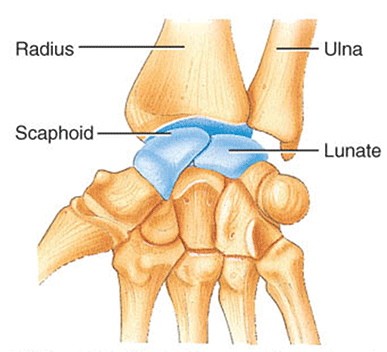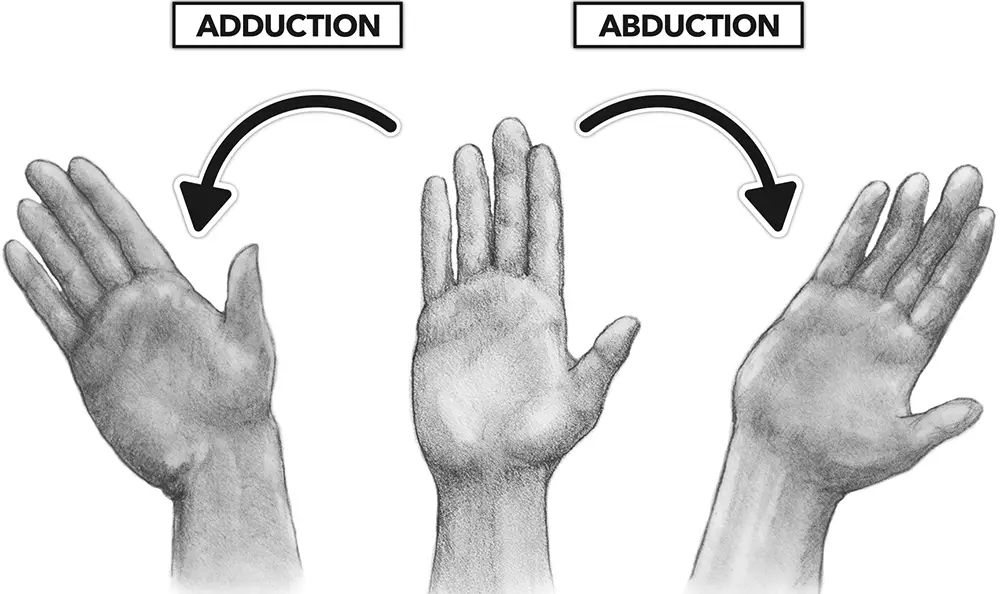Wrist Joint Movement in Keyboard Playing
The wrist joint is an example of a condyloid-joint[1], a double hinge joint having movement about two axes. The two axes are
- transverse
- front-back (antero-posterior).
Transverse Axis
The transverse axis permits movement in a plane at right angles to the transverse plane of the forearm (bending the hand backward). The front-back axis permits limited movement in the plane of the forearm. The wrist itself has no rotary movement, this being the function of the radio-ulnar joint.

What is the difference between flexion and extension at the wrist joint
Flexion and extension are two movements that occur at the wrist joint. Flexion refers to a movement that decreases the angle between the bones of the forearm and the hand, bringing the hand closer to the forearm. Extension, on the other hand, is the opposite movement which increases the angle between the bones of the forearm and hand, moving the hand away from the forearm.
Bending corresponds to flexion, straightening corresponds to extension. Flexion and extension at the wrist ((illustr ated by the normal hand-staccato of the pianist) may occur through an arc of 150 degrees or more, with marked individual variation. Abduction and adduction of the hand is a sideways bending at the wrist through 60° or 70° (See Figure 2.6 below)
Bending corresponds to flexion, straightening corresponds to extension. Flexion and extension at the wrist ((illustr ated by the normal hand-staccato of the pianist) may occur through an arc of 150 degrees or more, with marked individual variation. Abduction and adduction of the hand is a sideways bending at the wrist through 60° or 70° (See Figure 2.6 below)

Abduction and Adduction
Abduction and adduction is used in arpeggiated chord-figures, polyphonic, and double-note passages.
Abduction[2] and adduction of the hand may occur through an arc of 60 degrees or 70 degrees.
This lateral movement is greater toward the fifth finger than towards the thumb. This difference is caused by the shorter end of the ulna.
A combination of movements previously mentioned results in the circular movement of circumduction. [3]
Wide individual differences of movements at the wrist joint have a distinct bearing on piano technique.
In addition, the wrist serves as the fulcrum for the hand.
In addition, the wrist serves as the fulcrum for the hand.
[1]condyle: n. [Fr. < L. condylus < Greek kondylos, knuckle, orig., hard lump or knob] a rounded process at the end of a bone forming a ball-and-socket joint with the hollow part of another bone. A condyloid joint is an ovoid articular surface, or condyle that is received into an elliptical cavity. This permits movement in two planes, allowing flexion, extension, adduction, abduction, and circumduction.
[2]abduct: vt. [ < L. abductus, pp. of abducere, to lead away < ab-, away + ducere, to lead: see DUCT. 2. Physiol. to move or pull (a part of the body) away from the median axis or from another part [a muscle that abducts the thumb]: opposed to ADDUCT.
[3]circumduction: movement of a limb or extremity so that the distal end describes a circle while the proximal end remains fixed